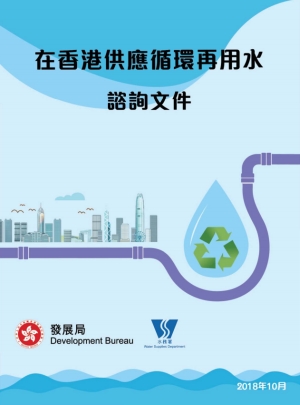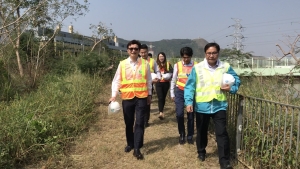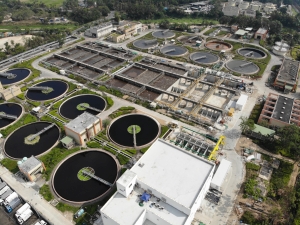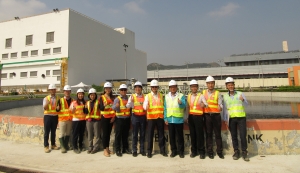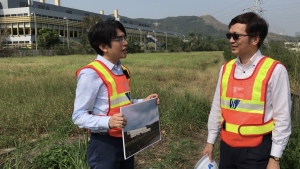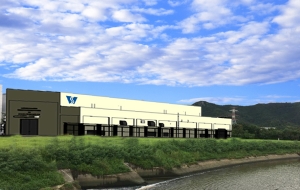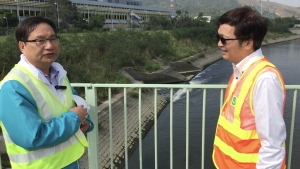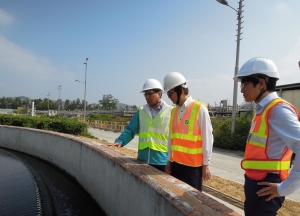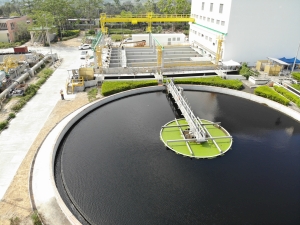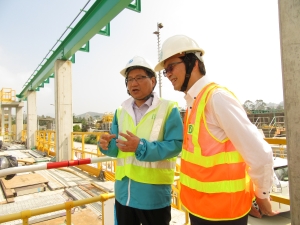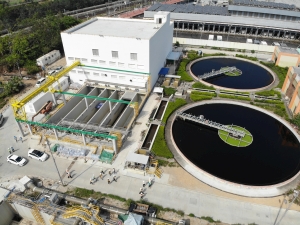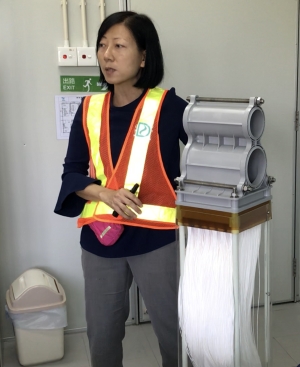What do you think about “the Supply of Recycled Water in Hong Kong”?
|
To cope with the challenges brought about by climate change on water resources, the Water Supplies Department (WSD) has been actively exploring new water resources, such as recycled water, that are not susceptible to climate change. Currently, the WSD is conducting a public consultation on the supply, charge and use of recycled water. At the same time, WSD has been working with the Drainage Services Department (DSD) to take forward the production of reclaimed water. This time, I have invited the Under Secretary for Development (USDEV), Mr LIU Chun-san, to take us to the Shek Wu Hui Sewage Treatment Works (SWHSTW) in Sheung Shui and tell us more about the details of the public consultation and the production of reclaimed water. What is “recycled water”? And what is “reclaimed water”? Simply put, recycled water comprises reclaimed water (that is suitable for reuse after further processing of high-quality treated effluent from sewage treatment works), treated grey water (produced from the treatment of used water collected from baths, wash basins, kitchen sinks, etc.) and harvested rainwater (collected from housing developments or other facilities). Recycled water for non-potable uses The use of recycled water has been increasingly practised throughout the world, including the United States of America, Australia and Singapore. The Government has been actively exploring the setting up of a centralised recycled water supply system for flushing, particularly in areas where fresh water is being used for it, and for other non-potable uses such as landscape irrigation and street cleansing. The WSD launched a public consultation on the “Supply of Recycled Water in Hong Kong” in mid-October. The consultation covers five key items: the supply of recycled water by the WSD is for non-potable uses only; measures to prevent the misuse of recycled water and erroneous cross-connections between the fresh water and recycled water supply systems, such as exploring the colour-labelling of recycled water so that it is instantly visible to the naked eye of users; exploring the charging for recycled water, such as supplying recycled water for flushing free of charge; exploring the control of the use of recycled water supplied by parties other than the WSD; and implementation arrangements for the proposals. Two departments collaborating to promote a water reclamation plan Reclaimed water is an important type of recycled water, converting from highly treated sewage effluent. The WSD and DSD are collaborating to promote a large-scale water reclamation plan. Now that the DSD is upgrading the SWHSTW to effluent polishing plant with tertiary treatment level (Note), the WSD plans to further polish the high-quailty treated sewage effluent from the plant to produce reclaimed water. The Assistant Director (Acting) of the WSD, Mr WONG Yan-lok, Roger, showed the USDEV, Mr LIU Chun-san, a site adjacent to the SWHSTW that has been reserved for the construction of a water reclamation plant with relevant design work underway. The treated effluent will be delivered to the contact tank inside the plant and dosed with chlorine and food-grade dye to turn into reclaimed water before being conveyed to service reservoirs through pumping stations for onward distribution to users via water mains. We aim to effect the supply of reclaimed water to the North East New Territories (including Sheung Shui, Fanling and the New Development Areas) to progressively replace the use of fresh water for flushing from 2022 onwards, so as to utilise valuable water resources effectively. Progressively increasing the sewage treatment level According to the Assistant Director/Electrical and Mechanical of the DSD, Mr CHUI Wai-sing, the SWHSTW is the third largest secondary sewage treatment works in Hong Kong. It has been in operation for more than 30 years and mainly treats sewage generated from Sheung Shui, Fanling, etc. The plant is now undergoing expansion in phases to increase its sewage treatment capacity and improve the quality of treated effluent. Advance works for the plant are expected to be completed in 2019, and the volume of sewage water treated daily will be increased from 93 000 cubic metres to 105 000 cubic metres. Through the new Shek Wu Hui Effluent Polishing Plant (SWHEPP), the DSD will deliver around 56 000 cubic metres of tertiary treated sewage effluent daily to the nearby water reclamation plant of the WSD for further polishing into reclaimed water. Cutting-edge sewage treatment technology will be used at the SWHEPP. Senior Engineer of the DSD, Ms LAI Wai-kwan, Sussana, used a physical model to demonstrate that the plant will be equipped with more than 2 000 membrane bioreactor modules in the advance works to filter out E. coli bacteria and minute pollutants in the sewage. The membranes are the main components that upgrade the original secondary treated effluent to the level of tertiary treated effluent. The much enhanced quality of treated effluent will pave the way for the WSD to produce reclaimed water. Climate change has significant impacts on water resources. To ensure a stable supply of water and sustainable development in Hong Kong despite the challenges of climate change, the WSD has been actively promoting water conservation and striving to exploit alternative water sources which are less susceptible to climate change, including desalinated water, reclaimed water, treated grey water and harvested rainwater. The WSD aims to diversify water resources to better prepare Hong Kong for the challenges. Besides, it has just completed three public forums on the Supply of Recycled Water in Hong Kong and received a lot of valuable opinions from the public. I cordially invite members of the public to actively express their views before the consultation period ends on 17 December.
Note: Tertiary Treatment is the highest sewage treatment level, as illustrated at: |
25 November, 2018
Back